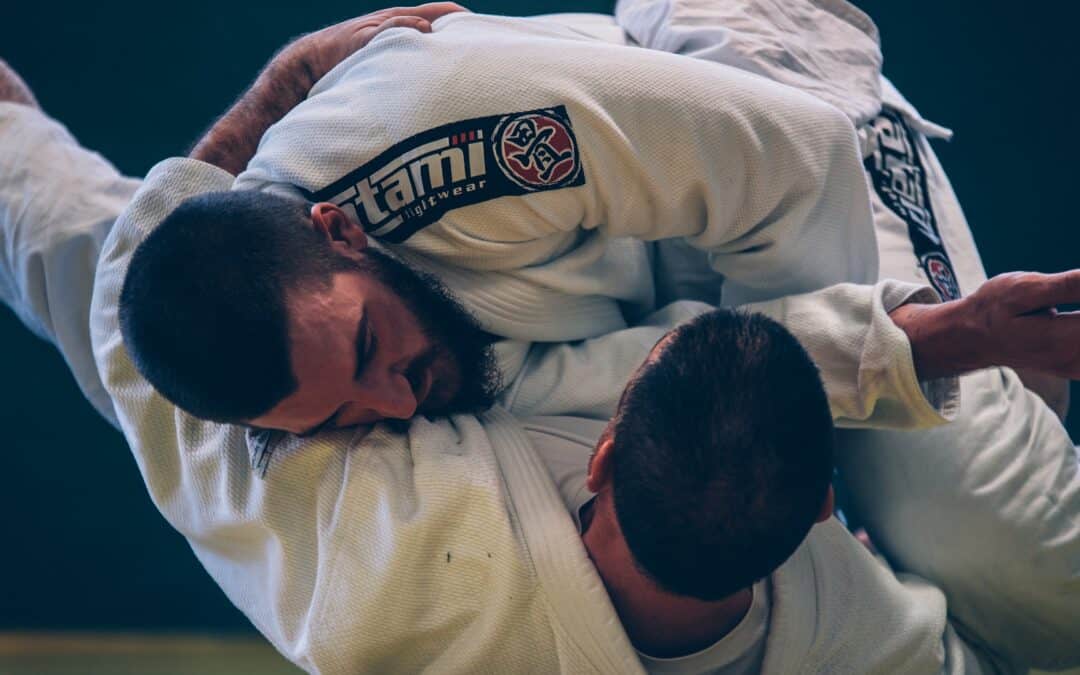Brazilian Jiu-Jitsu (BJJ) has been around since the early 1900s but has really grown exponentially in popularity over the last decade or so. It is used in many different ways from self-defense to cage fighting and is an integral part of mixed martial arts (MMA). It is an amazing art and skill, and one that could benefit many people.
Brazilian Jiu-Jitsu is considered the gentle art for a couple of reasons. One is that it derives from the Japanese translation, where jiu means “gentle” and jitsu means “art.” It is literally translated as the gentle art, but that also comes from its style and practice. It is a practice that involves mostly ground fighting in which people can be submitted and are able to “tap out” before having any actual physical harm or damage done to them.
Jiu-Jitsu is a very strategic and very humbling art. In many cases, size does not matter. Someone who is a lot smaller and more experienced can easily and quickly submit a beginner who is a lot bigger than him or her. BJJ is about manipulating the body in ways that it shouldn’t be in order to force the other person to tap out, or give up before any physical harm is done. It may sound aggressive, but continue reading on why it is still considered “the gentle art” to this day.
Table of Contents
The Focal Points Behind the Gentle Art
Jiu-Jitsu is not just another combat sport where you’re trying to hurt the other person until they’re unconscious. It takes a lot of thought and strategy, as well as a deep understanding of how the body moves, is supposed to move, and how it is not supposed to move. BJJ has some similarities to certain combat sports, but it also has differences that make it what it is.
No Striking
One of the main things that separate BJJ from other combat sports is that there is no striking, or hitting, your opponent. As opposed to boxing, kickboxing, or muay thai, jiu-jitsu doesn’t promote punches or kicks but mimics wrestling a little bit more.
As a result, this would give the impression of jiu-jitsu being a more gentle sport. It’s almost like playing chess but in a ground battle. One must think his or her way through the match and how to get out of a sticky situation and how to get the upper hand. It is considered “rolling” when you are fighting against someone else in BJJ, as two people will literally be on the ground wrestling and rolling due to it being 95% war on the ground.
Mental Game
It might seem a bit strange to someone unfamiliar with BJJ to hear it being called an “art.” Sure it’s still a sport in nature, and we can call most sports a certain type of art form, but jiu-jitsu has a very different mental piece to it. You must leave your ego at the door because you’re going to be humbled a lot whether you’re a beginner or advanced in the sport.
There is an intense level of problem-solving while your body is being twisted and manipulated in ways that are painful, all the while trying to figure out how to get out of it and switch roles between you and your opponent. The skill of remaining calm, breathing, and thinking critically while being pulled, held, choked, and twisted is what makes Brazilian Jiu-Jitsu a more “gentle art.”
Without striking, the skill set to control another human body in a way that causes them to give up before serious bodily harm is one that requires practice, finesse, and a lot of patience to master.
Final Thoughts
Brazilian Jiu-Jitsu is a sport designed to help people of all ages and sizes be able to adequately defend themselves, especially against those that are a lot bigger than them. It’s a combat sport more about leverage and understanding the human body than most traditional sports.
In BJJ, the ability to remain calm and play chess with another person while they are attacking you is what places it on a different level than other sports or martial arts practices. Since there is no striking of any kind, that is what also makes BJJ a more “gentle art” as opposed to other combat sports. It’s a great intro into the combat world, but also one that is good for those learning to defend themselves.

